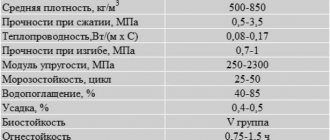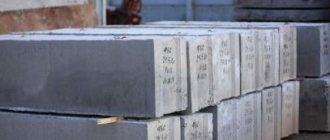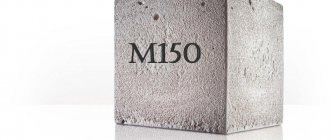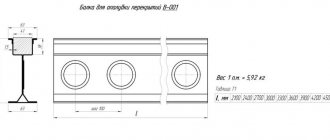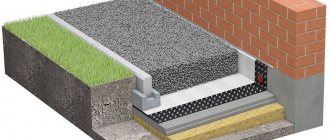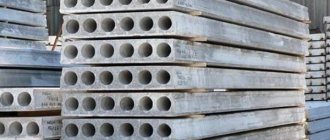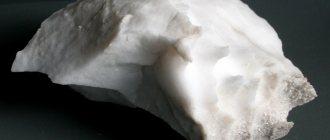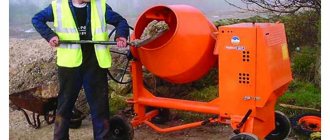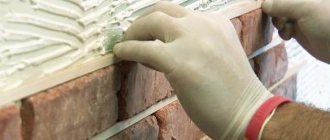Gravel is a loose rock of sedimentary origin. Its main component is pebbles of various shapes (usually round). Unlike crushed stone, gravel is of natural origin. It is formed during the destruction of rocks with the subsequent transformation of the resulting clastic material. In essence, gravel is the same sand, but only of larger fractions. It consists of pieces of different minerals and rocks. Therefore, the color and surface shape of different pebbles are not the same.
The most common impurities in it are clay, sand and dust. Material extracted from underground contains more impurities than material extracted from river beds or from the coastal zone of the seas. This is due to the washing out of small particles by water flows. Constant exposure to water makes the particles smoother and rounder. This gravel is suitable for the construction of small structures. For the construction of objects that have higher requirements, angular shaped particles are required. In such cases, crushed stone or well-cleaned quarry gravel would be a more suitable option.
Physical properties of gravel
Properties of gravel
Gravel is considered a loose granular rock. According to the predominant particle size, it is divided into several fractions: from 1 to 3 mm, from 3 to 5 mm, from 5 to 10 mm, 1 – 2 cm, 2 – 4 cm, 4 – 7 cm.
The strength of particles depends almost entirely on their chemical composition and internal structure. Particles consisting of granite, feldspar, marble, and quartz are considered the most durable. To determine this indicator, gravel is placed in a steel cylinder and checked under what mechanical stress they begin to break into pieces.
The ability of particles to maintain their shape and size is determined in a special installation (drum). Metal balls are placed there along with the gravel. When this device operates, they rub against each other. By reducing the size and mass of grains, the abrasion index is determined. It is expressed as a percentage.
The frost resistance indicator is determined by the number of freezing-thaw cycles during which the particles do not change significantly. There can be from 15 to 300 such cycles.
The ability to absorb water depends on porosity: the higher it is, the greater this ability. The most porous is expanded clay - a material that looks similar to gravel, but is obtained by firing clay artificially.
The thermal conductivity of gravel determines its ability to retain heat. On average it is 0.93 W/m2.
Gravel Density
This indicator is especially important in road construction, where embankments made from this bulk material are used. It is also important for those who decide to purchase it to build their own home.
The density of sand and gravel can be defined as the density of the rock that makes up the particles that make it up, or as the density of the bulk material, which is called bulk density. In any case, gravel made from heavy rocks (eg granite) will weigh more than, for example, gravel made from quartz or limestone. Density can be defined as the weight of a cube (cubic meter), which is measured in kilograms. On average, gravel has a density of 1.4 - 1.7 tons per cube. It is also called volumetric gravity or specific gravity.
However, the density of gravel placement is also important for construction. It is different for particles of different shapes and sizes. Bulk density, that is, the weight of 1 cubic meter of gravel in KamAZ, usually decreases as the size of its constituent particles increases. For coarse gravel it is, on average, 1500 kg per 1 m3, and for small gravel - 1700 kg per 1 cubic meter. The density of crushed stone and sand is approximately the same.
Humidity also affects the density of gravel. Heavily moistened material will have greater mass than dry material.
Determining the density of a material with known values of mass and volume is not difficult.
Natural stone materials
Natural stone materials
The properties of natural stone materials are determined, first of all, by the properties of the rock from which they are obtained. The quality of a rock depends on its origin (genesis), mineralogical composition, structure (structure), composition (texture) and degree of weathering. The wide variety of structures and textures of rocks causes the same variety of construction and technical properties of stone materials. The study of these properties is of great importance when assessing rock as a raw material for the production of stone materials, as well as for determining the quality of the stone materials themselves and the degree of their suitability for construction.
The quality of rocks and stone materials made from them used in road and bridge construction is determined by studying:
physical properties
rocks, which include density, bulk density, porosity, humidity, water saturation, frost resistance, cementing ability, thermal conductivity, sound conductivity, etc.;
mechanical properties
— compressive strength, tensile strength, crushing strength, impact load (viscosity), abrasion resistance, wear resistance, etc.;
compliance of the shape , size and quality of processing of stone materials (crushed stone, checkers, paving stones, side and rubble stone) with the specified standards or instructions. The properties of stone materials are determined in laboratories using average samples, as well as from the results of observing the behavior of the material in experimental areas. When studying methods for testing stone materials and their results, you should always keep in mind that they are to some extent arbitrary and cannot always correctly indicate the possible behavior of the material in practice. To objectively study the properties of materials, it is necessary to accurately perform tests, accumulate a large amount of test data, study and analyze this data, and, finally, compare them with the already known practice of the behavior of the material in practice. Imperfection of methods for determining the properties of materials, sloppiness in definitions and fragmentation of indicators lead to erroneous conclusions about the quality of the material. The ability to accurately determine the properties of materials is especially important when using local, little-known stone materials for construction.
Equipment for testing in laboratories during construction, conditions and sequence of tests must strictly meet the requirements of the relevant GOSTs and instructions.
For any laboratory tests, data from preliminary theological, visual determinations of rock samples on site, directly in the field, are very valuable.
According to the rules of geology, with the help of simple devices and reagents (a binocular or simple magnifying glass, a ruler with millimeter divisions, a knife, a steel needle, acids, a blowpipe), one can often determine the minerals that make up a rock, its structure and texture, which is studied in a geology course.
The average sample is taken from a rock deposit or batch of supplied stone material and should represent the average quality of the entire deposit or batch. The procedure and method for collecting average samples is usually indicated in the relevant GOST or instructions.
Physical properties.
According to the unified International System of Units (SI), the old concepts of specific gravity, volumetric gravity, volumetric bulk density are replaced for more precise designation by the concepts of density, bulk density and bulk density, respectively. The SI unit for these quantities is kilogram per cubic meter (kg/m3). Gram per cubic centimeter (g/cm3), ton per cubic meter (t/m3) are used as submultiple and multiple units of measurement in technology. The density (specific gravity) of the original rock is defined as the ratio of the resting mass of the mineral substance without pores and voids to its volume.
To determine the density, a rock sample is crushed and sifted through a 0.15 mm sieve, then dried. When determining density using a pycnometer, two samples weighing 10 g each (t) are weighed from the dried powder for parallel testing. Each sample is poured into a dry pycnometer, filled with water to half the volume of the pycnometer and boiled for 15-20 minutes. Then cool, add water to the mark and weigh (t2). After this, weigh the same pycnometer filled with clean water to the mark (t1). Density is calculated using the formula
When determining density in a volume meter, a sample weighing 80 g (m1) is weighed from the dried powder. Then, powder is poured into a volume meter filled to the bottom line with dehydrated kerosene until the kerosene level rises to the top line, i.e., 20 ml (V). The remainder of the sample is weighed (m2) and the density is calculated using the formula
The density of most stone materials is in the range of 2.7-2.9 g/cm3, and in igneous rocks it is higher than in sedimentary rocks, for example: the density of basalt, diabase, gabbro, diorite reaches 3.2 g/cm3.
Volumetric mass.
Volumetric mass (volumetric weight) is the mass per unit volume of a dried stone with pores in its natural state. The volumetric mass is expressed in grams per cubic centimeter (g/cm3), or in kilograms per cubic meter and is calculated using the formula
p0=m / V
The sample mass m is determined by simple weighing, and the volume V is determined in several ways. With the correct geometric shape of the sample with smooth surfaces, the volume is determined by direct measurement. The volume is most accurately determined by hydrostatic weighing based on the mass of displaced water.
The volumetric mass of a rock is always numerically less than its density, since the mass of a given material in its natural state (with pores) occupies a larger volume than the same mass without pores. For example, the volumetric mass of granite is approximately 2.6 g/cm3, and its density is 2.7 g/cm3; the volumetric mass of Artik tuff is 0.75–1.4 g/cm3, and its density is 2.7–2.8 t/cm3. The bulk density of a rock material depends on porosity and on the mineralogical composition, because different minerals have different densities. Knowledge of the volumetric mass of the material is necessary for calculations during the design and construction of a structure. In road and bridge construction, loose, bulk materials (crushed stone, gravel, sand, various binders) are widely used. When selecting concrete mixtures, during storage, and transportation, it is necessary to know the mass of freshly poured materials. The mass of these materials will be less than the volumetric mass of individual grains and pieces of stone material due to the voids between the individual grains filled with air. Therefore, another concept was introduced - bulk mass.
Bulk mass
(volumetric bulk density) is the mass of bulk material per unit volume together with voids. Bulk mass is expressed in kilograms per cubic meter (kg/m3) or in tons per cubic meter (t/m3) and is calculated using the formula
Mass m is determined by weighing, volume V is determined in a vessel (box) freely filled with bulk material.
Bulk mass is a variable quantity, changing depending on many factors (degree of compaction, humidity, grain shape, etc.). Freely poured crushed stone has a smaller bulk mass than compacted one. Dry sand and slightly moistened sand have different bulk masses. In these cases, the bulk mass is influenced by the voidness of the bulk material. The higher the voidness, the lower the bulk mass.
Porosity and voidness
- this is the property of a stone material - to have gaps between individual particles (grains, crystals, minerals) - pores that are not filled with a given substance. The pores of a dry material contain air or gas, the mass of which is insignificant compared to the mass of the material. Pores are small cells in the rock (up to 2 mm), and the spaces between grains of bulk material or pores in a material larger than 2 mm are called voids (emptiness). Pores are open (communicating) and closed. All porosity is called true or total. Thus, the porosity of a stone material can be judged as the degree to which its mass is filled with air, i.e., pores. Porosity is quantitatively determined by the volume of pores per unit volume of mass of the material. True porosity is calculated using the formula
where p is the density, g/cm3; p0—volumetric mass, g/cm3; Vpore - porosity, %. Porosity and voidness have a great influence on such properties of the stone material as mass, water absorption, thermal conductivity, sound conductivity, frost resistance, strength. Stone material with low porosity (up to 5%) is heavier, more durable, less water-absorbing and more frost-resistant. This is the material most often used in road construction.
Water absorption.
Water absorption is the ability of a rock to absorb water when kept in water for a long time, at normal atmospheric pressure and a temperature of 18-20 ° C.
To determine water absorption, three to six cube-shaped samples with an edge length of about 6 cm are taken, dried to constant weight at a temperature of 105-110 ° C, cooled and weighed (t). Then the samples are immersed in water for 48 hours so that the water layers are 2 cm above the samples. After 48 hours, the samples are removed, wiped with a damp soft cloth and immediately weighed separately (m1). Water absorption is calculated as a percentage by mass Wm or by volume Wvol using the following formulas:
Get full text
where V is the volume of the sample in a dry state, cm3. Depending on water absorption (as a percentage by weight), stone materials are divided: with very high water absorption - more than 8; with high water absorption - from 3 to 8; with average water absorption - from 1.5 to 3.0; with low water absorption - less than 1.5. The water absorption of various stone materials varies widely, for example, the water absorption of granite is about 0.5%, and Artik tuff is 30-34% by weight. Water absorption allows us to judge the porosity of the stone, its frost resistance, and thermal conductivity. Typically, the water absorption of a material is less than porosity, since water does not penetrate into closed pores, but is retained in large pores. In large-porous materials, water absorption is significantly less than porosity (voidness), for example, the porosity of limestone-shell rock is from 40 to 65%, and water absorption is only 20-30% by volume. Stone materials with water absorption of less than 0.5% are considered frost-resistant and are not subject to frost resistance tests. Water absorption also negatively affects the strength of the stone, as will be discussed below.
Water loss or moisture loss
is a property that characterizes the rate of water removal from a stone (drying), when the elasticity of water vapor in the stone is higher than its elasticity in the external environment. The water yield of different stone materials is different and depends on their structure and environmental conditions. This property is determined in the laboratory by drying water-saturated samples until a constant mass is obtained. The water loss indicator is the time in hours required to dry the sample to constant weight
Find out the cost of your work
Free order evaluation!
Frost resistance.
Frost resistance
- the ability of a rock in a water-saturated state to withstand repeated alternating freezing and thawing. When water freezes, it increases in. volume by about 10% and the resulting ice puts pressure on the walls of the material, reduces its strength, and eventually destroys it. In road surfaces, stone material finds itself in particularly difficult conditions. In autumn, it is almost always completely saturated with water, and in winter, too. In the spring it freezes and thaws alternately. At the same time, the material experiences enormous loads from cars passing along the road. All rocks with water absorption above 0.5% are tested for frost resistance. This test is carried out on cubic samples measuring 5x5x5 cm or cylinder-shaped with a height and diameter of 5 cm. The test consists of alternately freezing and thawing water-saturated samples at temperatures of minus 20° and plus 20°. The number of freezing and thawing cycles is assumed to be up to 200 or more, depending on the class of the structure and the operating conditions of the stone material in the structure. The rock is considered to have passed the frost resistance test if no damage in the form of cracks, delamination, rounding of edges and corners is found on the samples. For a breed that has passed the frost resistance test, the degree of strength reduction is determined, which is expressed by the frost resistance coefficient. The frost resistance coefficient Kmrz is calculated using the formula
Where; Rmрз is the compressive strength of a sample subjected to freezing, kgf/cm2; Rc is the compressive strength of a dry sample that has not been frozen, kgf/cm2.
Frost-resistant rocks have a frost resistance coefficient close to unity. For samples that fail the frost resistance test, the weight loss is determined for greater clarity.
Test with sodium sulfate solution
(safety test). The solution of sodium sulfate, which saturates the pores of the stone, crystallizes, increases in volume and creates pressure on the walls of the pores, like frozen water when determining frost resistance. Samples, the same as for determining frost resistance and in the same quantity, dried to constant weight, are dipped into the prepared sodium sulfate solution for 20 hours. Then they are dried for 4 hours, cooled and again dipped in the sodium sulfate solution for 4 hours. Alternately immersing the samples in a saturated solution for 4 hours is performed 5 times, after which the samples are inspected with a magnifying glass, noting any damage that appears. Then the samples are washed with running water until sodium sulfate is completely removed, dried to constant weight, and the weight loss of each sample is determined as a percentage. The arithmetic mean of three determinations for homogeneous rocks and five for heterogeneous rocks is taken as the final result.
Mechanical properties.
The mechanical properties of stone materials are characterized by their strength - the ability to resist the destructive action of external mechanical forces. In road and bridge structures, stone materials are mainly affected by compression forces, impacts, abrasion, etc.
Compressive strength . The compressive strength is determined on rock samples in the form of cubes or cylinders. Cubic samples are made on circular or frame saws. Cylindrical samples are drilled on a machine equipped with a crown filled with carbide or diamonds. The edges of the samples that will be subject to the press load are ground and made parallel on a grinding machine.
Stone materials affected by weathering are porous and, when moistened, reduce their strength, therefore it has been established that the main test of rock compressive strength is testing water-saturated samples. Tests are carried out on hydraulic and mechanical presses with power from 60 to 100 tf
An important condition for correctly determining the mechanical strength of materials is a certain rate and uniformity of pressure build-up on the sample. For example, the rate and uniformity of pressure increase when testing stone material should be within the range of 3-5 kgf/cm2 per 1 s. The compressive strength is calculated using the formula
where Rcom is the compressive strength, kg/cm2; R
— the greatest load at which the sample was destroyed, kgf;
F
is the support area of the sample, cm2.
Along with determining the compressive strength of rock, tensile and shear strength is determined.
Tests are carried out on samples of the correct shape. Tensile strength is determined using a tensile testing machine with a device in the form of a special gripper for cylindrical samples; for shear - in conventional compression presses with a device.
To determine the degree of reduction in the strength of water-saturated stone materials compared to dry ones, a numerical characteristic was introduced in the form of a softening coefficient. Thus, the softening coefficient characterizes the water resistance of the material and is determined by the formula
where Rvl is the compressive strength of the water-saturated sample, kgf/cm2;
Rdry—ultimate compressive strength of a dry sample, kgf/cm2.
Stone materials with a softening coefficient of more than 0.8 are considered water-resistant. With a coefficient of less than 0.8, stone materials cannot be used for the construction of road pavement and structures that will be in water or in wet conditions during operation.
Igneous, dense, finely crystalline rocks have a slight decrease in strength in a water-saturated state, therefore, for stone materials with water absorption up to 0.5%, the softening coefficient and frost resistance coefficient need not be determined. Based on their compressive strength after water absorption, stone materials are divided into grades. Often, the grade of stone material is simply taken as an indicator of compressive strength in kilograms per square centimeter (or in newtons per square meter), For example, grade 1200, grade 500, etc.
Impact resistance.
Impact strength . The property of a stone to collapse under impact load is called brittleness. The fragility of a stone material depends on the mineralogical composition, the nature of adhesion between individual minerals, the cementing substance, its condition, the structure and composition of the rock. The most fragile rocks are quartzite, some sandstones and igneous rocks of glassy structure. Fragility is a negative property of stone material used for road pavement. The inverse of brittleness is called toughness. The higher the viscosity of a stone material, the higher its construction properties. The impact strength of rock is determined using a PM impact tester by successive impacts of steel cylinders on a crushed stone sample.
Abrasion resistance
characterizes the hardness of the stone material. Abrasion strength is determined on an abrasion circle, which is a device the main working part of which is a horizontal cast-iron rotating circle on which abrasion of a cylindrical sample occurs. An indicator of strength during testing is the loss of sample mass in grams per square centimeter of abraded surface per 1000 revolutions of the circle.
Wear strength of rock
— abrasion is determined in a shelf rotating drum.
This definition characterizes the viscosity of the rock used for road stone materials. An indicator of wear strength is the weight loss (in percent) of the sample in the form of crushed stone per 500 drum revolutions. The wear strength indicator when tested in a shelf drum is included in the technical characteristics of rocks.
Application of gravel
Gravel has found wide application in the construction of houses, when laying roads, for creating embankments and in arranging personal plots, and also as an insulating material.
- In construction, it is used as a filler in concrete. Crushed stone is also used for this purpose, but it is a more expensive material.
- In road construction it is suitable for soil compaction. For these purposes, hard grades of gravel are used that have a maximum bulk density.
- When arranging squares and flower beds, white gravel is often used, which visually goes well with flowers and plants. Sprinkling flower beds with such material eliminates the need for frequent weeding and watering, since the bulk material prevents the growth of weeds and helps retain moisture in the soil (reduces surface runoff and evaporation).
- River gravel can be used in the construction of artificial reservoirs, preventing the growth of algae and the appearance of turbidity in the water. In addition, a bottom made of pebbles looks prettier than the earthen or muddy bottom of standing reservoirs.
- Well-rolled and pleasant-looking river gravel is best suited for arranging children's recreation areas.
Determination of volumetric weight of ore
The volumetric weight of ores changes significantly with changes in their mineralogical composition and density;
therefore, it should be determined separately for each natural ore type in the same ore body. Even within the same type of ore, the volumetric gravity can vary significantly. This especially applies to oxidized ores of sulfide deposits. When sampling, it is necessary to distinguish between the volumetric and specific gravity of ores. Volumetric weight is the weight of a unit volume of ore in its natural form, without disturbing the voids and pores inherent in it. Specific gravity is the weight of a unit volume of ore crushed into a fine powder with the disappearance of all voids and pores characteristic of this ore. When sampling and calculating reserves, one should use volumetric gravity, which in porous ores may be noticeably less than their specific gravity.
In ore bodies, the extraction of which involves pick-and-shovel operations, it is most reliable to use the method of excavation from the pillar to determine the volumetric weight. In areas of the ore body composed of characteristic ores, stopes are marked for each natural type. On a carefully leveled face surface, a precisely determined volume of ore is cut out in the shape of a rectangular prism, equal to 0.01-0.05 m3. The long edge of the prism should be placed across the ore banding visible in the face. The walls of the carved prism are trimmed with a pick, and its dimensions are carefully measured with a tape measure. All ore crushed from a precisely measured volume is immediately weighed on a decimal scale with an accuracy of 1 kg. By dividing the weight of the crushed ore in kilograms by its accurately measured volume in cubic decimeters, the volumetric weight is obtained. In this case, weighed ore should be immediately used to determine its moisture content and porosity. The pillar excavation method is very convenient for soft ores mined by pick-and-shovel operations. In faces subject to drilling and blasting operations, this method may not always give satisfactory results. The contours of the recess are incorrect, and accurate determination of the volume is only possible with a significant increase in the measured volume.
In most cases, the volumetric weight of ores is determined by laboratory methods. The ore sample is weighed and the weight in grams is obtained (weight P); Then, on a thin wire, the sample is immersed in water. The difference in water level readings before and after immersion in cubic centimeters gives the volume of the ore sample (volume v). Dividing the weight P by the volume v gives the volumetric weight Dv = P/v. To measure volume, a graduated glass cylinder with a capacity of 500 or 1000 cm3 is used. In this case, the dimensions of ore samples are taken to be slightly smaller than the diameter of the cylinder. To determine the volumetric weight of larger samples and ore specimens, you can use a simple device shown in Fig. 186, which is a wide glass jar with the bottom cut off, fixed in a wooden stand in an overturned position. A curved glass tube passes through the stopper, 1-2 cm short of the top edge of the jar. Water is poured into the jar, the excess of which is drained through the tube. In this case, the water level in the jar assumes a constant height. An ore ore suspended in air on a thin wire is immersed in a jar. The displaced water, equal to the volume of the ore, is drained through a tube into a measuring cylinder placed under the jar, based on the water level in which the volume of the ore is determined.
Conventional commercial scales can also be used to determine the bulk density of rocks and ores. A glass jar with a capacity of about 2 liters, filled with water to a certain line (pasted on the outside of a paper strip), is placed on one pan of the scale. The weight of a jar of water up to the line is equal to a g. Part of the water (about 0.5 liters) is poured out and weighed again. The weight of the jar with the remaining water is b g, and a > b. A piece of ore is lowered into the jar, fine ore is added until the water level rises to the line and weighed again. Let the weight of the jar with ore and water up to the line be equal to c. Then the weight of the ore placed in the jar is equal to c—b, and the weight of the volume of water equal to the volume of the sample is equal to a—b. Then the volumetric weight Dv is equal to: All these methods give fairly correct values of the volumetric weight only for rocks or ores of dense composition, samples of which are devoid of any noticeable pores or cracks. When determining the volumetric weight of porous or fractured ores, it is necessary to cover their surface with a film impermeable to water, otherwise some of the water will be absorbed into the pores of the sample and the reading will show a reduced volume and an exaggerated volumetric weight. To do this, it is best to immerse a piece of porous ore in an alcohol varnish and, after wetting the surface of the sample, leave it in air for a day to dry. Instead of alcohol varnish, when working with porous ores, you can use molten paraffin. Coating small ore samples with paraffin increases their volume by adding volume to the wax layer. To more accurately determine the volumetric weight of small samples, it is necessary to subtract the volume of the paraffin layer from the volume of the waxed sample. This value is determined by dividing the weight of the paraffin layer in air by the specific gravity of the paraffin, which can be taken from reference tables. The weight of the paraffin layer on the sample is determined by the difference in the weight of the sample in air before and after immersing it in molten paraffin.
The specific gravity of ore is determined in a laboratory setting using a pycnometer. A pycnometer is a small glass flask of varying but precisely set capacity, for example, 25 cm3. This volume is shown on the narrow neck of the pycnometer as a line. For determination, take a sample of about 1-1.5 g from finely ground ore powder and distilled water.
The determination is made using the formula:
where D is the specific gravity of ore;
P1 is the weight of the empty pycnometer;
P2 is the weight of the pycnometer with a sample of ore;
P3 is the weight of the pycnometer with a sample of ore and with water poured to the line;
P4 is the weight of the pycnometer with water filled to the line.
Weighing is carried out on an analytical balance.
To completely remove air from a sample of ore filled with water, the pycnometer with the sample of ore and water is boiled, after which water is added to the line.
To obtain a reliable value for the volumetric or specific gravity of ore for each natural type of ore, you should have at least 15-25 separate determinations, from which the average value is derived.
What to consider when purchasing gravel
To make your purchase as effective as possible, you need to take into account some nuances.
First of all, you should pay attention to the appearance of the material. The stones must be solid. The presence of a large number of small pieces and crumbs indicates its low quality and the presence of a large number of fragile particles. This material is not very suitable for preparing concrete and other construction work. Large amounts of impurities can also degrade the quality of the gravel. This material should not be purchased. You should also not buy gravel when it is wet or damp.
Application[ | ]
Registered in the food industry as a food additive E558
, preventing caking and clumping.
Bentonite is used to prepare drilling mud. It is used in foundry, in the processing of petroleum products and iron ores, in the production of ceramics, and for clarification of solutions.
Bentonite is a biologically active substance; adding it to feed and soil fertilizers increases the productivity of animals and the yield of agricultural crops.
Bentonite is used in hydraulic construction to combat filtration; it is used to screen channels. In the USSR, more than a dozen large deposits of bentonite clay were developed: Cherkasy region, Caucasus, Kazakhstan.
The study and development of deposits of domestic bentonite began with the Crimean keel. For a long time, keel served as a standard for comparison with clays from other regions of the USSR.
The main component of bentonite is montmorillonite, which, after modification, is used in the oil and gas, food, cosmetics, pharmaceutical and construction industries.
Bentonite is also used for decorating various types of terrariums, paludariums, aquariums and other devices for keeping amphibians and other representatives of aquatic elements at home.
Application in winemaking[ | ]
In winemaking, bentonite is used to accelerate the clarification of must and wine materials and to stabilize wines against protein clouding. The main component of bentonite (60–70%) is montmorillonite Al2[Si4O10](ОH)2 n
H2O, which is a sheet silicate with an expanding structural cell; has high swelling properties and is capable of producing a gel-like suspension.
Bentonite is added to wine material in the form of a 20% aqueous suspension at a rate of 1-4 g/l. The dose is determined by conducting a test pasting. Typically, B.'s production processing is combined with demetallization, gelatin coating, or polyvinylpyrrolidone. To accelerate the formation of precipitate, polyacrylamide or polyoxyethylene is added. When clarifying the wort, bentonite increases the rate of sedimentation of turbid particles, adsorbs oxidative enzymes, removes microorganisms, reduces the amount of protein and other substances.
Clarification is achieved through the combined action of the processes of flocculation and adsorption of turbid particles of wine material by bentonite, stability - due to the adsorption of protein, condensed phenolic substances, polysaccharides and other compounds that, during long-term storage, can react with each other and with other components of the wine or precipitate.
Bentonite is also added to the circulation mixture to improve remuage conditions in the production of champagne.
